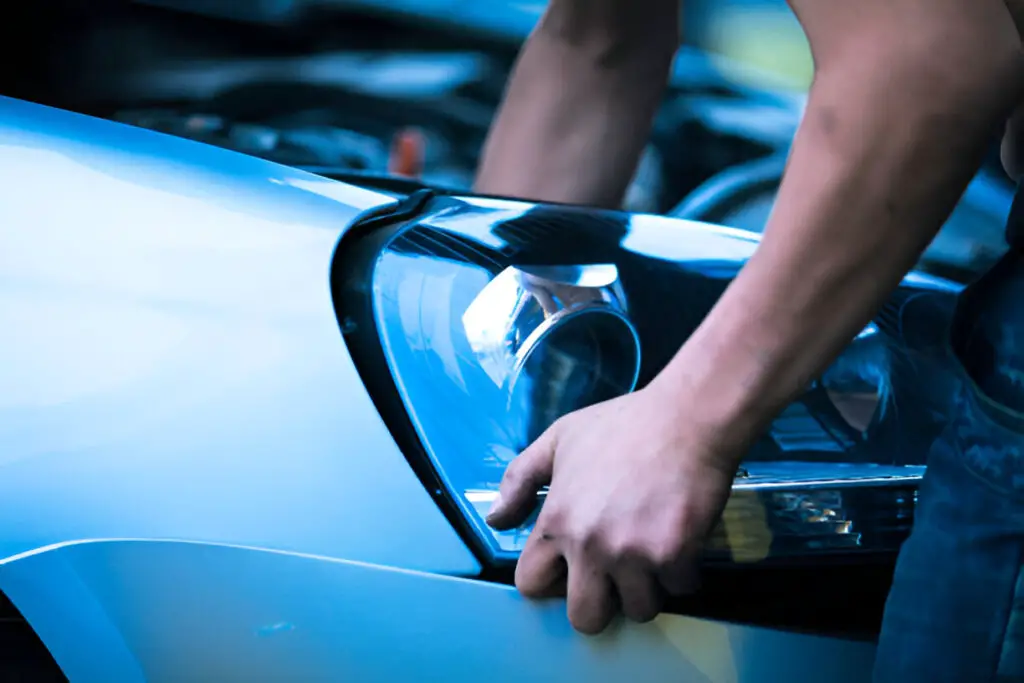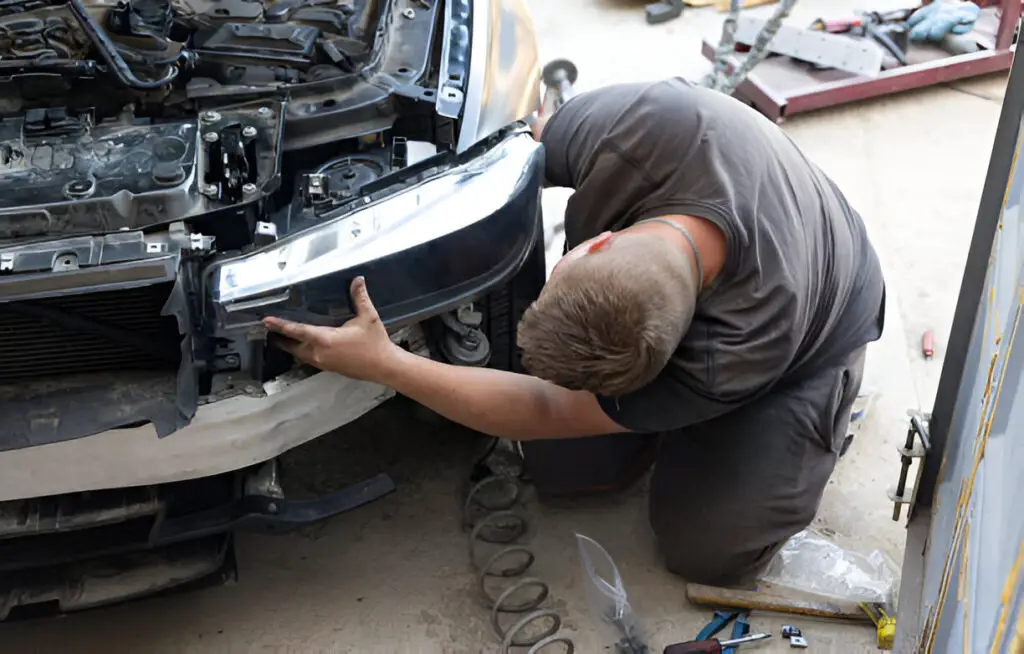Headlights are an essential component of vehicle safety, ensuring visibility during nighttime driving or in poor weather conditions. When a headlight goes out, the instinctive response is to replace the bulb. However, what happens when the bulb replacement doesn’t solve the issue? This problem is more common than you’d think, and several factors could be contributing to the malfunction.
In this blog post, we will explore possible reasons for headlight failure after a bulb replacement and provide solutions for each scenario. We’ll also address some frequently asked questions (FAQs) at the end.

Contents
- 1 Causes of Headlight Not Working after Replacing Bulb
- 1.1 1. Faulty Bulb or Incorrect Installation
- 1.2 2. Burnt-Out Fuse
- 1.3 3. Damaged Headlight Relay
- 1.4 4. Wiring Issues
- 1.5 5. Bad Ground Connection
- 1.6 6. Faulty Headlight Switch
- 1.7 7. Problem with the Headlight Socket
- 1.8 8. Moisture or Condensation in the Headlight Housing
- 1.9 9. Alternator or Battery Issues
- 2 Step-by-Step Troubleshooting Guide
- 3 Frequently Asked Questions
Causes of Headlight Not Working after Replacing Bulb
When a headlight doesn’t work after replacing the bulb, several issues could be the cause. Here’s a breakdown of the most common reasons:
1. Faulty Bulb or Incorrect Installation
Sometimes, the simplest answer is the right one. A faulty bulb or improper installation could easily be the reason why your headlight isn’t working after you’ve replaced it. Here’s why this might happen:
- Defective Bulbs: Though new bulbs are generally reliable, manufacturing defects can occur. It’s possible the replacement bulb you installed is already faulty.
- Incorrect Bulb Type: If you have replaced the bulb with one that’s incompatible with your vehicle’s make and model, it may not work. Double-check the bulb’s specifications, including wattage and fitment, to ensure compatibility.
- Improper Installation: Sometimes, the bulb may not be seated correctly in its socket. If the bulb is even slightly misaligned, it might not make proper electrical contact, resulting in a malfunction.
Solution:
- Always test a new bulb before installation.
- Ensure you’re using the correct bulb type for your vehicle.
- Double-check your installation, making sure the bulb is securely seated in its socket.
2. Burnt-Out Fuse
Modern vehicles rely on a network of electrical fuses to protect components like headlights from electrical surges. Each headlight typically has its own fuse, so it’s possible one may have blown, preventing the headlight from working even after you’ve replaced the bulb.
Solution:
Locate your vehicle’s fuse box (usually under the hood or dashboard) and check the headlight fuse. If it’s blown, replace it with a fuse of the correct amperage rating.
3. Damaged Headlight Relay
A relay is an electrical switch that controls the high current flow to your headlights. If the relay responsible for your headlights has gone bad, your headlights won’t turn on, no matter how new the bulb is. Relays tend to wear out over time due to the heat generated by the electric current they manage.
Solution:
Consult your vehicle’s manual to locate the headlight relay. If the relay is damaged, it will need to be replaced. You can often swap it with another identical relay in your vehicle (for testing purposes) before purchasing a new one.
4. Wiring Issues
Over time, your car’s wiring system can degrade due to age, heat, or wear and tear. Damaged wiring could prevent power from reaching the headlight bulb, even though the bulb itself is functional. Signs of wiring problems include frayed wires, exposed copper, or corrosion at connection points.
Solution:
Inspect the wiring that leads to your headlights. If you notice any damage, the affected wires may need to be repaired or replaced. In severe cases, you may need the assistance of a professional auto-electrician.
5. Bad Ground Connection
Electrical circuits in cars need a good ground connection to function properly. If the ground connection for your headlight system is loose or corroded, the current won’t complete its circuit, leading to headlight failure.
Solution:
Inspect the ground wire, usually a black wire attached to the car’s chassis. Clean any corrosion or dirt, and tighten any loose connections. In some cases, replacing the ground wire might be necessary.
6. Faulty Headlight Switch
The headlight switch on your dashboard might seem like an unlikely culprit, but it’s a critical part of the electrical system. A malfunction in the headlight switch could mean that the bulbs, relays, and wiring are all fine, but the lights aren’t receiving the necessary signal to turn on.
Solution:
Diagnose the headlight switch using a multimeter to see if it’s functioning properly. If it’s not, you’ll likely need to replace the switch.
7. Problem with the Headlight Socket
Over time, headlight sockets can become corroded or suffer from wear, especially if exposed to moisture. A corroded socket may not allow a strong electrical connection between the bulb and the vehicle’s electrical system, even if the bulb itself is new.
Solution:
Inspect the socket for corrosion or wear. If it’s corroded, you can clean it using electrical contact cleaner, but if it’s severely damaged, it may need to be replaced.
8. Moisture or Condensation in the Headlight Housing
Condensation can build up inside the headlight housing if it’s not properly sealed. This moisture can short-circuit electrical components, including the bulb itself. Moisture might also cause corrosion, leading to poor electrical contact and eventual failure of the headlight.
Solution:
Inspect the headlight housing for signs of condensation. If you notice moisture, you’ll need to dry out the housing and reseal it to prevent water from entering. In some cases, a damaged housing may need to be replaced entirely.
9. Alternator or Battery Issues
Although less common, electrical issues stemming from a weak battery or malfunctioning alternator can affect the operation of your headlights. A weak battery may provide inconsistent power, while a faulty alternator can cause electrical problems throughout your vehicle, including your lights.
Solution:
Test your vehicle’s battery and alternator with a multimeter. If your battery is weak or the alternator isn’t charging properly, you may need to replace one or both components.

Step-by-Step Troubleshooting Guide
If you’ve replaced the headlight bulb and it’s still not working, follow these troubleshooting steps:
- Verify the Bulb: Double-check that you’ve installed the correct bulb and that it’s properly seated.
- Check the Fuse: Inspect the headlight fuse for any signs of damage or a blowout.
- Test the Relay: Swap the headlight relay with another identical relay to see if the problem is with the relay.
- Inspect the Wiring: Look for any obvious damage or corrosion in the headlight wiring or connectors.
- Inspect the Socket: Check the bulb socket for signs of wear, corrosion, or loose connections.
- Examine Ground Connections: Make sure the headlight’s ground wire is securely attached and free of corrosion.
- Test the Headlight Switch: If everything else checks out, test the switch itself for electrical continuity.
If you’re unable to resolve the issue after these steps, it may be time to consult a professional mechanic or electrician.
Frequently Asked Questions
Here are some FAQs about causes of headlight not working –
1. Why do both headlights go out at the same time after replacing the bulbs?
This could be due to a blown fuse, faulty relay, or wiring issue that affects both headlights. It’s less likely that both new bulbs are defective, but it’s still a possibility. Check the fuse box and the relays before inspecting the wiring.
2. What should I do if my new headlight bulb keeps burning out?
Frequent bulb failure can indicate a problem with the electrical system, such as a power surge caused by a faulty alternator, bad wiring, or poor-quality bulbs. It could also be due to moisture entering the headlight housing and damaging the bulbs.
3. Can a weak battery cause headlights not to work?
Yes, a weak battery or a malfunctioning alternator can cause electrical components, including the headlights, to malfunction. Insufficient power supply from the battery can result in dim or non-functioning headlights.
4. How can I prevent moisture from entering my headlights?
Ensure that the headlight housing is properly sealed after replacing the bulb. If moisture is already present, dry out the housing and reseal any gaps. You can use silicone sealant around the edges of the housing to prevent water from entering.
5. Why is only one of my headlights working after replacing both bulbs?
If only one headlight is working after a bulb replacement, you may have a wiring issue, a blown fuse, or a faulty relay affecting just one side. Double-check that the bulb on the non-working side is correctly installed and that the socket is free of corrosion.
Conclusion
Having a headlight fail after replacing the bulb can be frustrating, but the solution is often a matter of identifying the true source of the problem. By carefully checking the fuse, relay, wiring, socket, and other electrical components, you can likely diagnose and fix the issue yourself. However, if the problem persists, don’t hesitate to consult a professional mechanic for further troubleshooting.
Headlights are critical to your safety on the road, so it’s important to address any issues promptly.